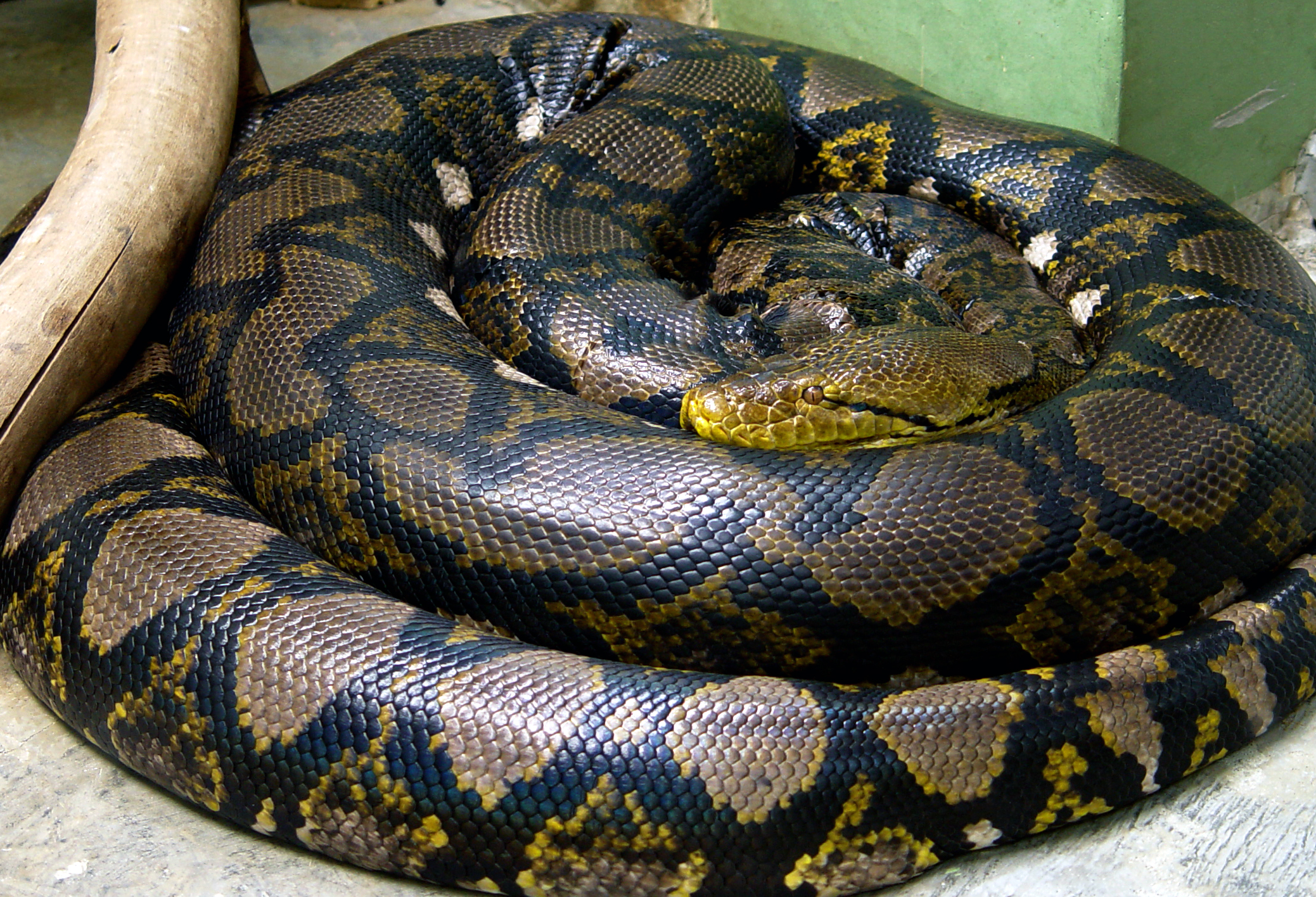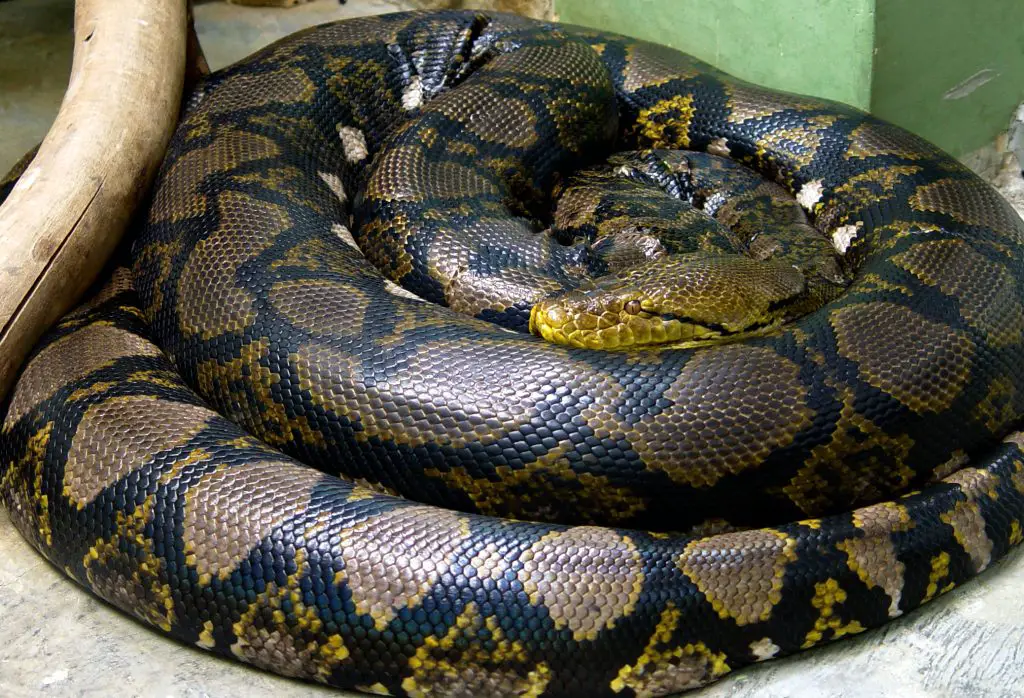The reticulated python is one of the largest snakes in the world, with a length that can reach up to 30 feet. But where did this impressive reptile come from?
Reticulated pythons are native to Southeast Asia, specifically found in countries such as Indonesia, Malaysia, and the Philippines. These snakes thrive in rainforests, swamps, and marshes, and are known for their impressive hunting skills and beautiful patterns. Let’s take a closer look at the origins of this fascinating species.

Where Are Reticulated Pythons From?
Reticulated pythons are some of the most fascinating creatures in the world. These snakes are not only the longest snakes in the world but are also known for their striking and beautiful patterns. But where do these pythons come from? In this article, we will explore the origins of reticulated pythons and discover some interesting facts about these amazing creatures.
Geographic Range
Reticulated pythons are native to Southeast Asia, specifically Indonesia, Malaysia, Thailand, and the Philippines. They can be found in a variety of habitats such as rainforests, grasslands, and swamps. These pythons are also commonly found near rivers and streams, as they are excellent swimmers.
Reticulated pythons have been introduced to many other parts of the world, including the United States, where they are now considered an invasive species in Florida. However, their native range remains in Southeast Asia.
Physical Characteristics
Reticulated pythons are the longest snakes in the world, with lengths of up to 30 feet. They have a slender and muscular body, covered in beautiful scales with a distinctive pattern of interlocking polygons. Their coloration varies from light brown to black, with yellow or white markings. They have a triangular head with sharp teeth and powerful jaws.
Reticulated pythons are constrictors, meaning they suffocate their prey by wrapping their bodies around them. They primarily feed on rodents, birds, and other small mammals.
Breeding and Reproduction
Reticulated pythons reach sexual maturity at around four years of age. They are oviparous, meaning they lay eggs rather than giving birth to live young. Females can lay up to 100 eggs at a time, which they incubate for approximately 80 days. Once the eggs hatch, the young pythons are left to fend for themselves.
Conservation Status
Reticulated pythons are not currently endangered. However, they are threatened by habitat loss due to deforestation and human encroachment. They are also commonly hunted for their skin and meat, which is considered a delicacy in some parts of Southeast Asia.
Efforts are being made to protect reticulated pythons and their habitat. In Indonesia, for example, reticulated pythons are protected by law, and it is illegal to hunt or trade them without a permit.
Benefits of Reticulated Pythons
Reticulated pythons play an important role in their ecosystem as top predators. They help control populations of rodents and other small mammals, which can cause damage to crops and other vegetation.
In addition, reticulated pythons have been studied for their potential medicinal properties. It is believed that compounds found in their venom may be useful in the treatment of various diseases, including cancer.
Reticulated Pythons Vs Other Snakes
Compared to other snakes, reticulated pythons are unique in their size and pattern. They are longer than any other snake in the world and have a distinctive, beautiful pattern of interlocking polygons on their skin.
Unlike venomous snakes, reticulated pythons are not considered a threat to humans. However, they are still powerful predators and should be treated with caution and respect.
Conclusion
Reticulated pythons are fascinating creatures with a rich history and unique characteristics. Their native range in Southeast Asia is home to some of the most diverse ecosystems in the world, and efforts are being made to protect these habitats and the creatures that live within them.
Whether you are a snake enthusiast or simply interested in learning more about these amazing creatures, reticulated pythons are definitely worth studying and appreciating.
Frequently Asked Questions
Here are some frequently asked questions about the origin of reticulated pythons.
Where are reticulated pythons from?
Reticulated pythons are native to Southeast Asia. They are found in countries such as Indonesia, Malaysia, and the Philippines. These snakes prefer to live in rainforests, swamps, and grasslands.
Reticulated pythons are considered to be one of the largest snake species in the world. They can grow up to 30 feet long and weigh over 300 pounds. These snakes are also known for their distinctive patterns of yellow, brown, and black scales.
How do reticulated pythons hunt for food?
Reticulated pythons are carnivores and feed primarily on small mammals such as rodents, birds, and bats. They are ambush predators and use their keen sense of smell to locate their prey. Once they have found their target, they strike quickly and use their powerful muscles to squeeze the animal to death.
After killing their prey, reticulated pythons swallow it whole. Their jaws are capable of stretching wide enough to accommodate prey that is much larger than their own head. They can go several weeks or even months without eating after a large meal.
Are reticulated pythons dangerous to humans?
Although reticulated pythons are not venomous, they are still considered to be dangerous to humans. In the wild, they are known to attack humans if they feel threatened or cornered. In captivity, reticulated pythons have been responsible for several incidents of snake attacks on their owners.
It is important to remember that reticulated pythons are not suitable pets for inexperienced snake owners. They require specialized care, handling, and housing. It is also illegal to own a reticulated python in some states and countries.
How do reticulated pythons reproduce?
Reticulated pythons are oviparous, which means that they lay eggs to reproduce. Female reticulated pythons can lay up to 80 eggs at a time, which they incubate by coiling their body around them to keep them warm.
After about two months, the eggs hatch and the baby snakes emerge. At birth, reticulated pythons are about 2 feet long and are fully independent. They grow quickly and can reach their full size within a few years.
What is the conservation status of reticulated pythons?
Reticulated pythons are currently listed as a species of least concern by the International Union for Conservation of Nature (IUCN). However, their populations are declining due to habitat loss, hunting for their skin and meat, and capture for the pet trade.
Conservation efforts are being made to protect reticulated python populations, such as establishing protected areas and regulating the trade of wild-caught snakes. It is important to ensure their survival as they play an important role in their ecosystem as top predators.
Do All Reticulated Pythons Grow 20ft long? Giant Snakes and more critters.
In conclusion, reticulated pythons are fascinating creatures that have captivated humans for centuries. Their origins can be traced back to the tropical regions of Southeast Asia, where they thrive in the lush rainforests and swamps. These snakes are known for their impressive size, strength, and hunting abilities, making them one of the most formidable predators in the animal kingdom.
Throughout history, reticulated pythons have played a significant role in the cultures of Southeast Asia, where they are often revered as symbols of power, strength, and wisdom. Today, these majestic creatures continue to fascinate and inspire people around the world, as scientists and researchers work to uncover new insights into their behavior, biology, and ecology.
Whether you are a nature enthusiast, a wildlife photographer, or simply someone who appreciates the beauty and diversity of life on Earth, reticulated pythons are an amazing and awe-inspiring species that are well worth learning more about. So why not take some time to explore the origins and evolution of these incredible snakes, and discover all the fascinating facts and stories that make them one of the most captivating creatures on the planet?


